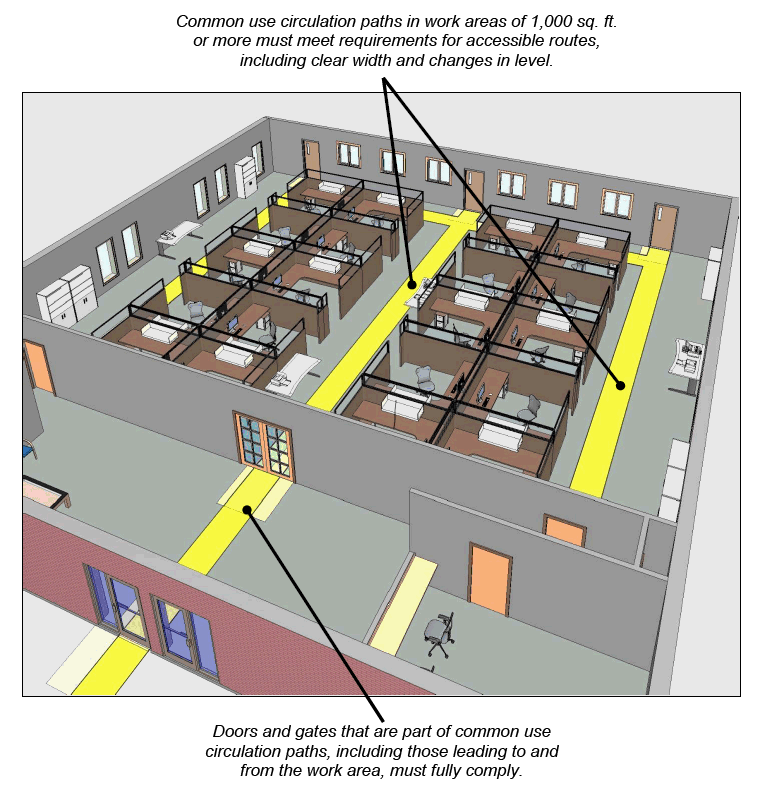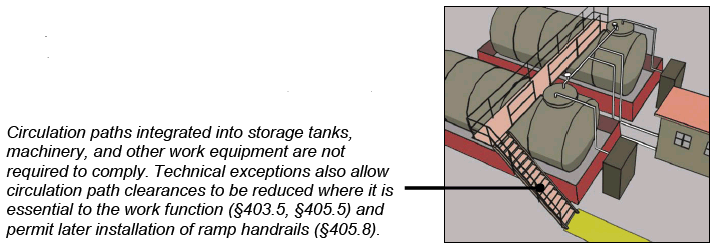Common Use Circulation Paths in Employee Work Areas [§206.2.8]
Common use circulation paths must be accessible in work areas 1,000 square feet or more in size (as defined by permanently installed partitions, counters, casework, or furnishings). This requirement facilitates access to individual work stations within a space.
Common Use Circulation Paths
Work Area Circulation Paths: Exceptions
Common use circulation paths are required to be accessible except:
-
in work areas below 1,000 sq. ft. in size
-
in work areas fully exposed to the weather (regardless of size)
-
where they are integral to work equipment
Circulation Paths Serving Exempted Spaces [§203]
Portions of common use circulation paths serving exempt spaces within a work area are not required to comply, including routes to or within:
-
machinery spaces used only by service personnel;
-
spaces accessed only by ladders, catwalks, crawl spaces, or very narrow passageways;
-
employee work areas under 300 sq. ft. that are elevated at least 7” as an essential functional condition of the space (excluding raised courtroom stations);
-
and other exempted spaces.




User Comments/Questions
Add Comment/Question